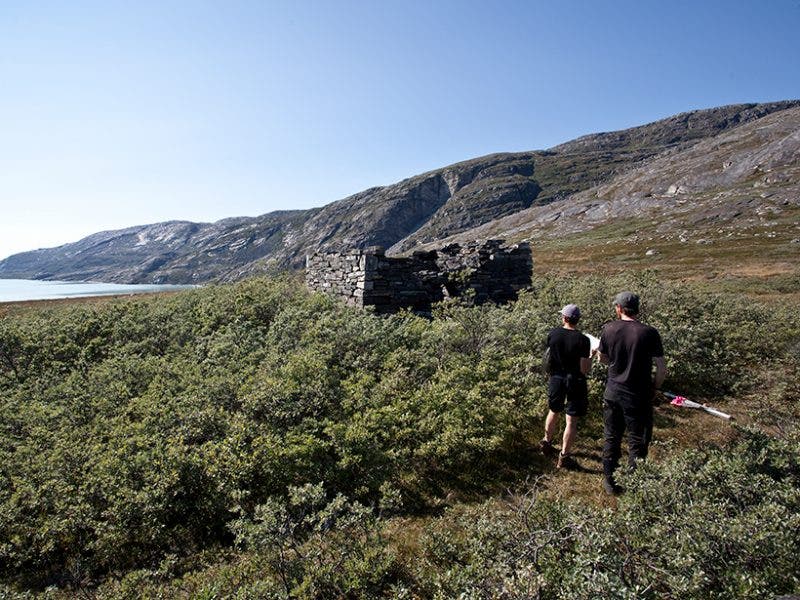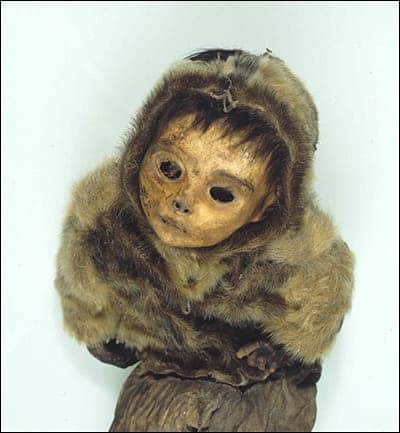
In Norse mythology, there are many myths that once known, are now lost. But the Norse, of course, left behind more than their tales. They also left behind their things and, in places like Anavik, on the western coast of Greenland, their dead.
And long before Vikings came to Greenland, the indigenous Inuit people left behind mummies, as well as hair with intact DNA.
Elsewhere in the Arctic, on an icy island called Spitsbergen, there’s a place called the Corpse Headlands, where there are graves filled with the bodies of 17th and 18th century whalers. When archeologists excavated the site in the 1970s, they found down-filled pillows, mittens, and pants sewn together from pieces of other pants.
The Arctic’s ice helps preserve these snippets of human history. But snippets of organic material rot when it’s hot, and new research is finding that as the world warms, remains like those at Anavik and Corpse Headlands will decompose before archaeologists are ever able to unearth them.
“The microbial degradation of the organic carbon is really temperature dependent,” said Jørgen Hollesen, a geographer at the National Museum of Denmark in Copenhagen.
To get a clearer picture of the warming, Hollesen and his team installed weather stations at five sites in western Greenland, where they measured soil temperature and water content. Inland sites, they found, get less rain overall than coastal sites, and they also tend to be hotter. Such dryness and hotness, Hollesen said, create ripe conditions for decomposition because bacteria that decompose organic matter have more air to breathe.
Rapid Decomposition
The team then modeled, under different greenhouse gas emissions scenarios, just how much decomposition they might expect to see in the next century.
They found that instead of Arctic archaeological remains taking at least a century or more to fully decompose, up to 70% will likely vanish in the next 80 years. In Greenland alone, there are over 6,000 registered archaeological sites. This number includes both Norse and Inuit sites.
“We cannot afford the luxury of thinking that heritage sites preserved underground arepreserved,” said Vibeke Vandrup Martens, an archaeologist with the Norwegian Institute for Cultural Heritage Research who was not involved in the new Scientific Reports study.

Vandrup Martens studies remains on Svalbard that stand a good chance of decomposing at a rapid pace over the coming years, and she hopes this new research will help archaeologists like her when it comes to prioritizing which of those sites they need to work to preserve. “It’s a question of choosing, or just accepting having lost it,” she said.
It’s still not possible to say what kinds of remains, be they bones or clothes or wood, will decompose first. But finding that out is what Hollesen wants to do next by keeping an eye on what kinds of remains appear to be decomposing the fastest.
“We don’t know which ones contain something that could be fantastic,” he said. “You don’t know what you haven’t found yet.”
Article by Lucas Joel, Freelance Journalist. This post was originally posted on the EOS website.


